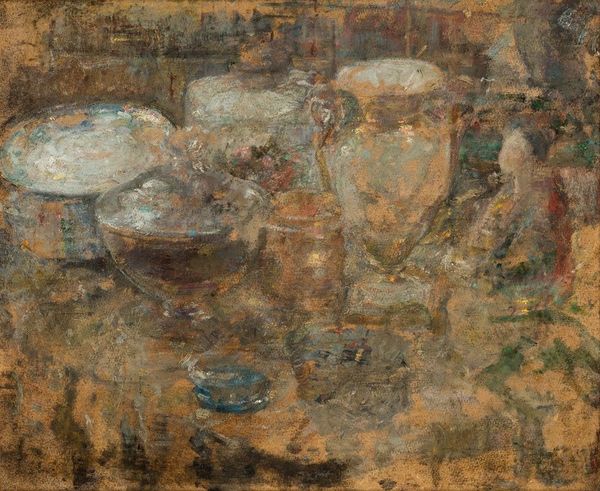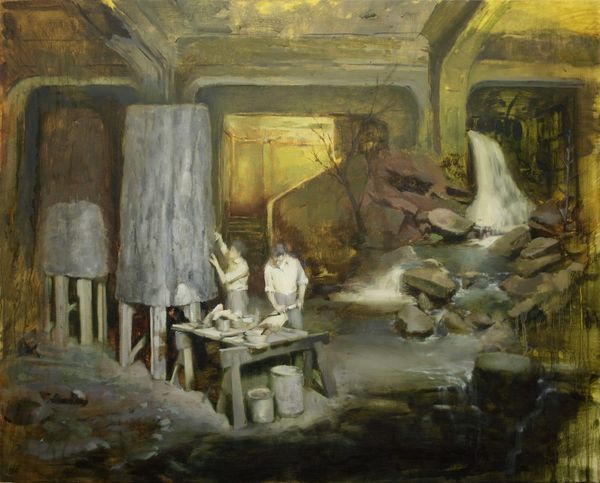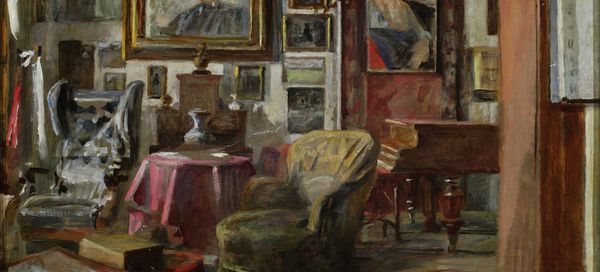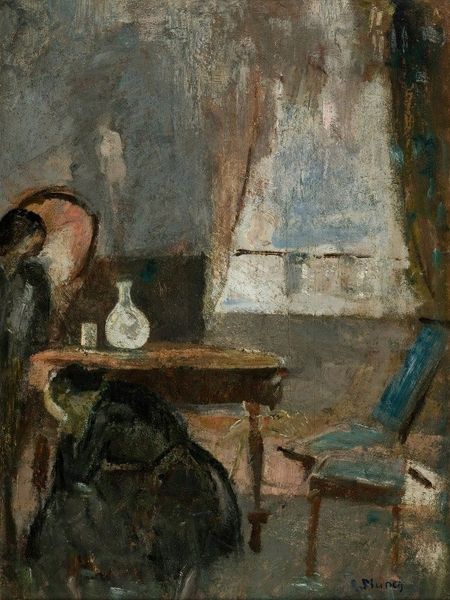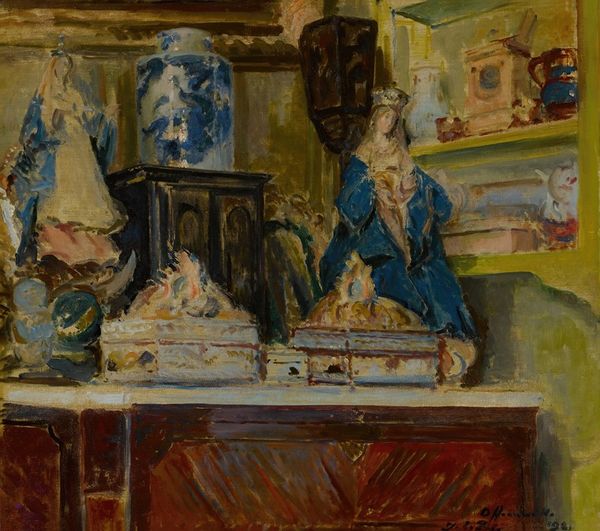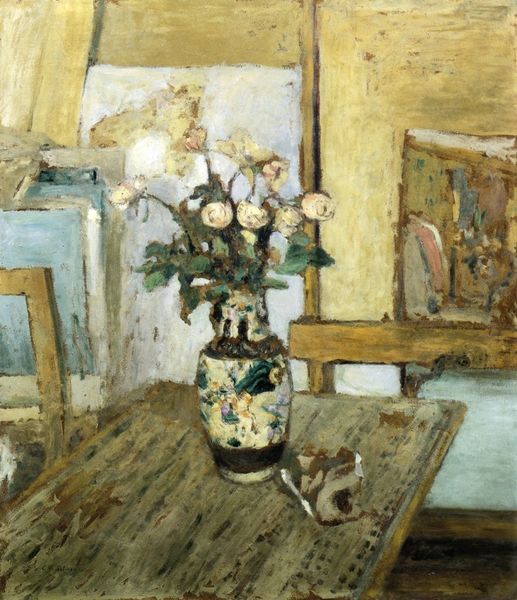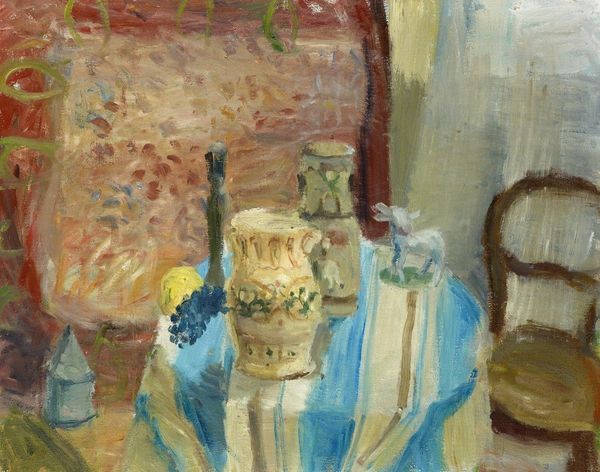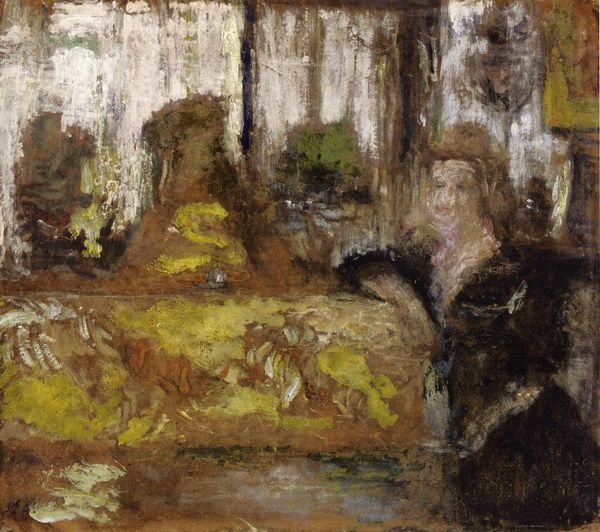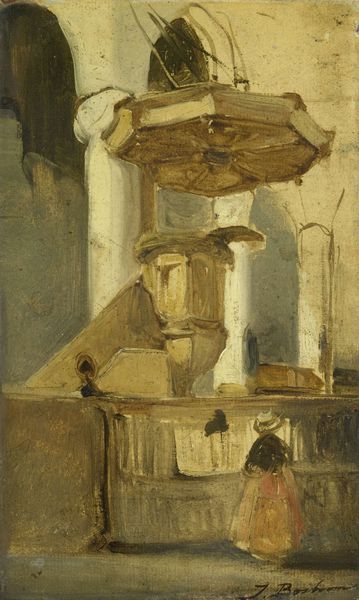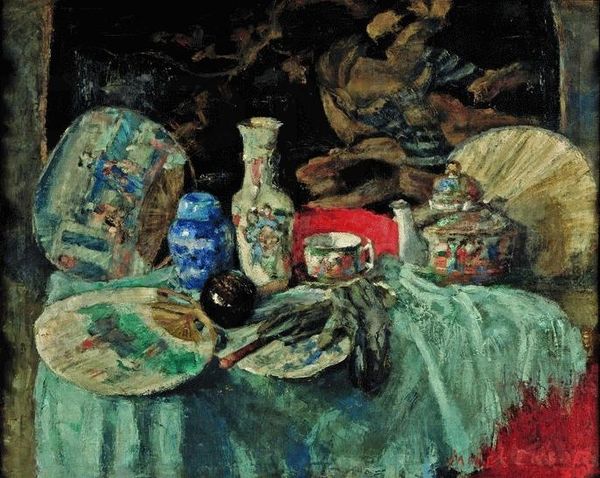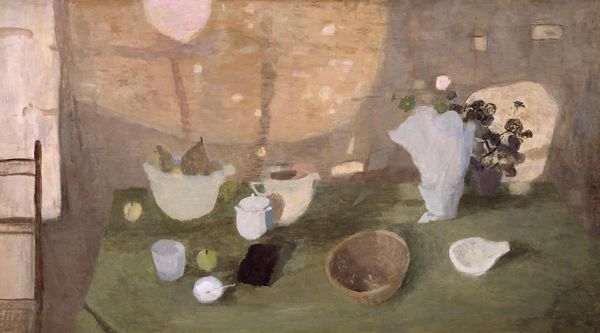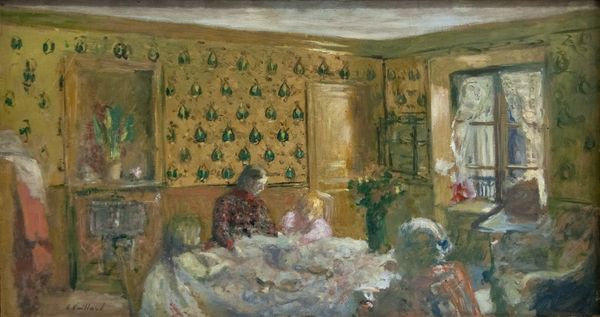
Copyright: Public Domain: Artvee
Curator: Olga Boznanska's "Still Life with a Vase," painted in 1918, invites us to consider the artist's intricate relationship with objects and representation during a time of intense social upheaval. Editor: Immediately, I’m struck by the painting's muted palette and soft, almost hazy atmosphere. The composition feels very deliberate, carefully arranged, almost like a stage set for contemplation. Curator: Indeed. Boznanska, who often confronted challenges as a woman artist navigating male-dominated spaces, used still life as a space for intimate expression. These objects weren’t simply items; they held symbolic weight, reflecting personal experiences and perhaps hinting at the instability of the world around her during World War I. The almost melancholic tone of this arrangement can be seen as a response to political and societal anxieties of the time. Editor: I see that melancholic undertone you speak of. Looking closely, the impasto technique adds a tangible weight and presence to these forms, which seems contradictory to the overall haziness of the image. It is as if, structurally, Boznanska has carefully presented a stage set that suggests the precariousness of existence and an internal life struggling with external conflict. Curator: Boznanska’s exploration extended beyond mere representation. It probed the essence of form and feeling, reflecting her engagement with post-impressionist techniques while developing her own artistic language to critique and challenge dominant patriarchal narratives. The way she renders depth, it evokes a sense of longing and quiet defiance. Editor: The longer I examine the still life, the more intrigued I become by the artist's semiotic strategies. By deliberately layering shades, shapes and the compositional framework as such, Boznanska has crafted a delicate exploration of visual harmony, which I feel suggests at underlying questions relating to being, life, and what happens between those things. Curator: It is pieces like this, with their ability to communicate on multiple layers, that underscore the depth and continued relevance of Boznanska’s art, extending it beyond the purely visual into the realm of historical, feminist inquiry. Editor: Yes, seeing these intricate, symbolic object relationships helps us think about visual construction, about presence, absence, and everything in between.
Comments
No comments
Be the first to comment and join the conversation on the ultimate creative platform.
